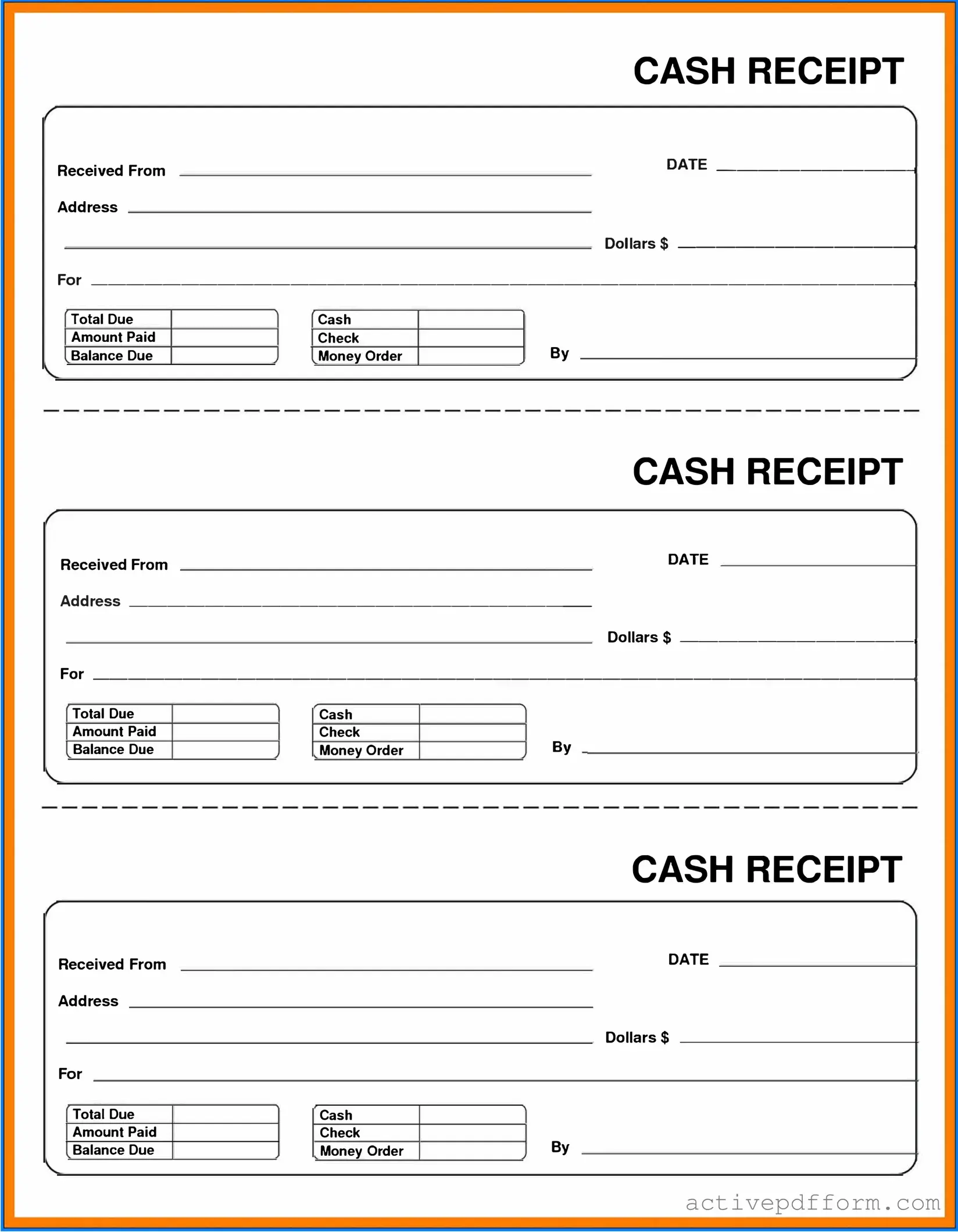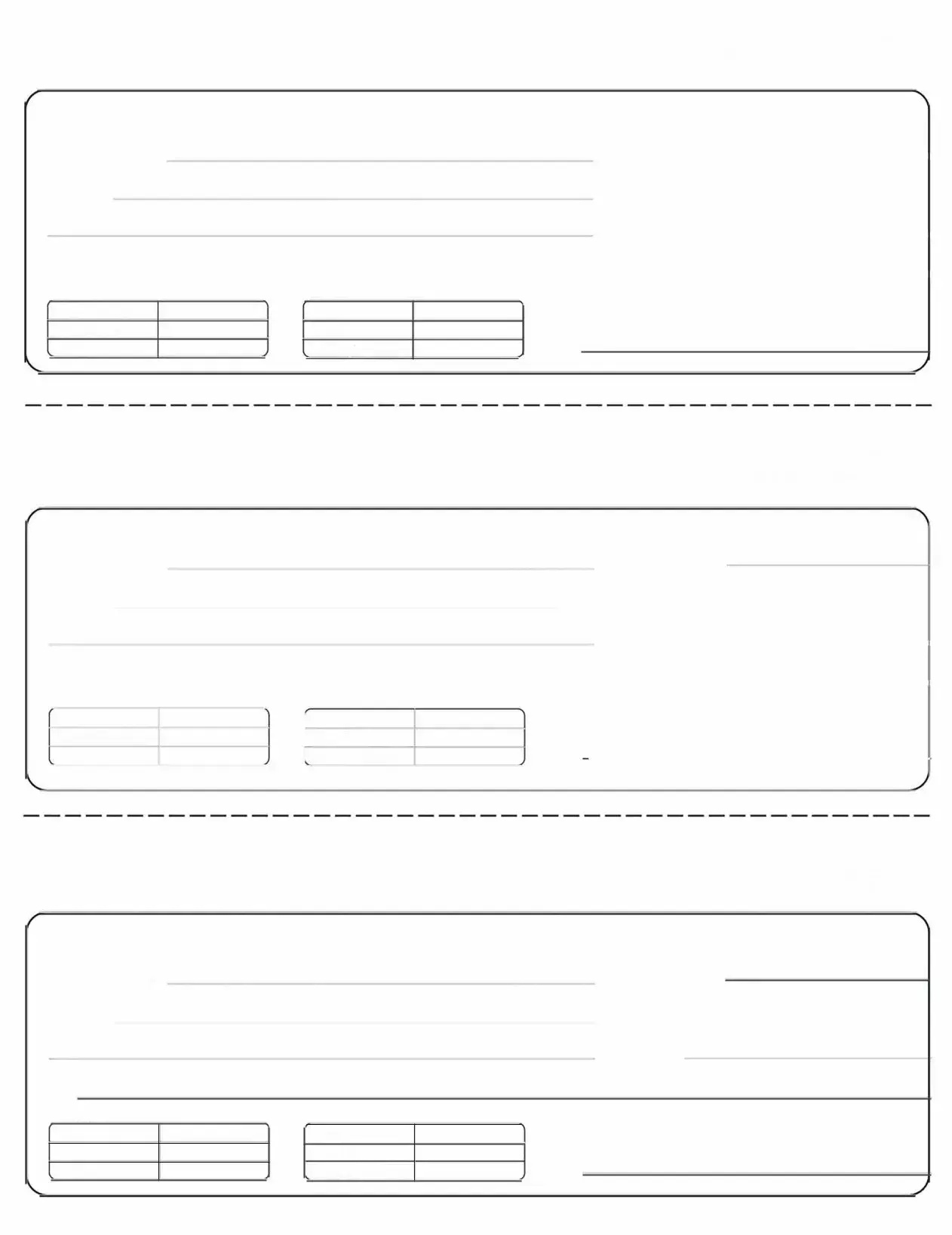What is a Cash Receipt form?
A Cash Receipt form is a document used to acknowledge the receipt of cash payments. It serves as proof that a transaction has taken place and that the payment has been received by the seller or service provider. This form is important for both record-keeping and accounting purposes.
When should I use a Cash Receipt form?
You should use a Cash Receipt form whenever you receive cash payments from customers or clients. This includes payments for goods, services, or any other financial transactions. It is particularly useful for businesses that deal with cash transactions regularly.
What information is typically included in a Cash Receipt form?
A Cash Receipt form usually includes details such as the date of the transaction, the name of the payer, the amount received, the purpose of the payment, and the signature of the person receiving the cash. Some forms may also include a unique receipt number for tracking purposes.
Is a Cash Receipt form legally binding?
Yes, a Cash Receipt form can be considered legally binding as it serves as evidence of a transaction. It can be used in case of disputes regarding payments. However, it is important to ensure that the form is filled out accurately and signed by both parties involved in the transaction.
Can I create my own Cash Receipt form?
Absolutely! You can create your own Cash Receipt form as long as it includes all the necessary information. Many businesses opt for customized forms that reflect their branding. Just make sure it captures all essential details for effective record-keeping.
How do I store Cash Receipt forms?
Cash Receipt forms should be stored securely to protect sensitive financial information. You can keep them in physical form in a locked filing cabinet or digitally by scanning and saving them in a secure cloud storage system. Ensure that you have a backup to prevent loss of data.
What should I do if I lose a Cash Receipt form?
If you lose a Cash Receipt form, it is advisable to document the loss and notify the involved parties. If possible, recreate the receipt with the same details and have it signed again. Keeping a record of lost receipts can help maintain accurate financial records.
How long should I keep Cash Receipt forms?
Generally, it is recommended to keep Cash Receipt forms for at least three to seven years, depending on your local laws and accounting practices. This retention period helps in case of audits or any financial inquiries that may arise in the future.
Can Cash Receipt forms be used for electronic payments?
While Cash Receipt forms are primarily designed for cash transactions, they can also be adapted for electronic payments. If you receive payments via credit cards, bank transfers, or online payment platforms, you can use the form to acknowledge those payments as well.
What is the difference between a Cash Receipt and an Invoice?
A Cash Receipt confirms that payment has been received, while an Invoice is a request for payment. An Invoice is issued before payment is made, detailing the amount owed for goods or services. Once payment is received, a Cash Receipt is generated to acknowledge that the transaction has been completed.

